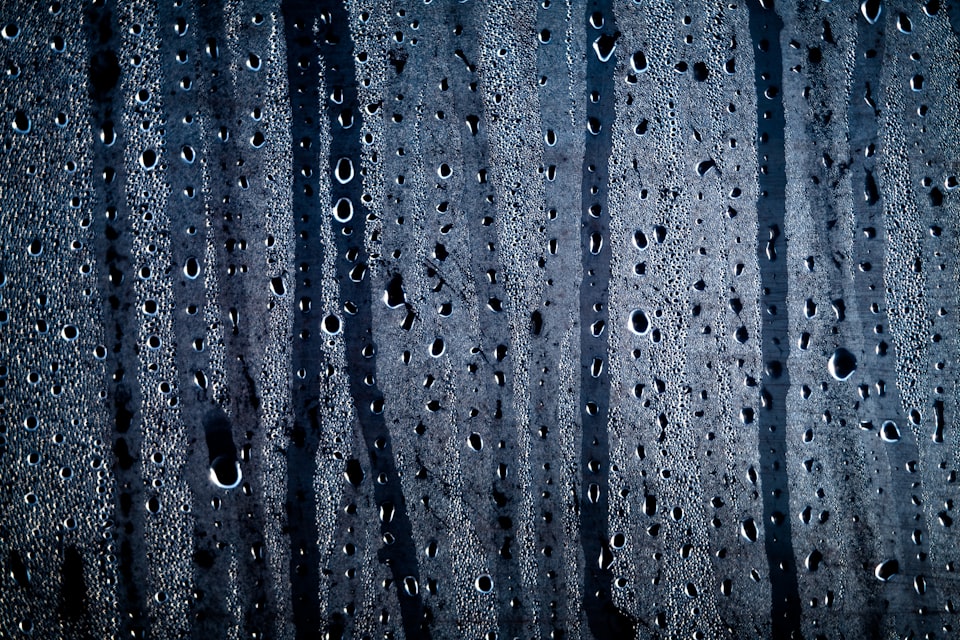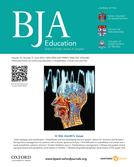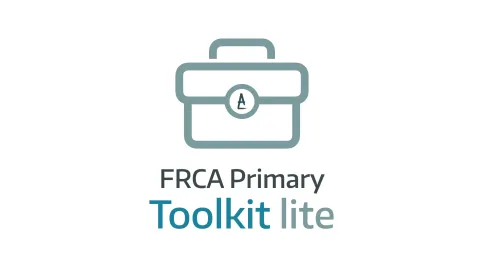Humidity

Take home messages
- Humidifying air takes a lot of energy, even more so than warming it to body temperature
- Humidity is an exam favourite, so take the time to learn it well
- HME filters need an adequate tidal volume, as well as enough time, to work properly
What is humidity?
Everyone knows when it's humid, but it's rather tricky to concisely describe what humidity actually is.
So here goes:
Air is capable of holding a certain amount of water vapour, and the mass of water vapour held by a certain volume of air is the absolute humidity measured in g/m3 or mg/litre.
If air is particularly dry, it may contain considerably less water vapour than it is able to hold when fully saturated.
The amount of water vapour held within a given sample of air, expressed as a percentage of the maximum theoretical mass of vapour that sample of air could carry, is the relative humidity.
For example 22 g/m3 of water vapour in a sample of air that could carry 44 g/m3 would be 50% relative humidity.
The reason this is important is because as air warms up it is capable of carrying more water vapour, so if you warm fully saturated air up, the absolue humidity remains the same, however the relative humidity will drop, as that same volume of air can now carry more vapour than before.
An example
- If you warm up a fully saturated sample of air containing 22 g/m3 of water, it may now be able to hold 44 g/m3 of vapour
- The absolute humidity has stayed the same - there are still 22 g of water vapour in a metre cubed of air
- But because it is now able to hold double that amount, it is no longer 'fully saturated' - in fact it is only 50% relative humidity
Equally, if you cool air down, the relative humidity will increase for exactly the same reason.
The air becomes progressive less able to carry so much water vapour, so the amount of vapour present forms a greater proportion of the maximum capacity of the air.
This continues as the temperature drops until the relative humidity reaches 100%, beyond which point any further cooling will result in the vapour condensing back into its liquid phase, as the air cannot hold that much vapour any longer.
The temperature at which this occurs is the dew point.
Dew collects on the grass on a cold morning because the warm, moist air has cooled overnight, and has cooled below the temperature at which the air is able to hold that much water vapour and so the vapour condenses.
What is the dew point?
- The temperature at which water vapour starts to condense because the air is maximally saturated and can no longer hold so much vapour
This forms the underlying principle for the Regnault hygrometer
What is the absolute humidity of air in room air, and in the trachea?
- 17 g/m3 in room air and temperature
- 44 g/m3 in the trachea at 37 degrees celsius
It's easy to see how a patient can lose a huge amount of heat energy through the respiratory tract, especially if hyperventilating. Not only are they losing heat energy by warming the air, they're also losing heat to the latent heat of vaporisation needed to humidify it as well.
How can you measure humidity?
There are three ways to measure relative humidity that you need to be able to recall in the exam:
- Hair hygrometer
- Wet and dry bulb hygrometer
- Regnault hygrometer
It's less common to be asked how to measure absolute humidity, but if in doubt, it's worth suggesting one of these two:
- Transducer
- Mass spectrometer
To be fair, mass spectrometer is a good shout for measuring anything if you're struggling to find an answer.
How does a hair hygrometer work?
- The length of a hair increases with humidity, so by fixing a hair in place at one end, and attaching a calibrated graduated scale to the other end, the hair will automatically cause the display to ‘read’ the current relative humidity
- This works well between 30% and 90% relative humidity
The terms in bold are important for any OSCE questions that might crop up.
How does a wet and dry bulb hygrometer work?
The wet and dry bulb hygrometer uses the latent heat of vaporisation to measure relative humidity.
That's your one-sentence exam answer.
The explanation is as follows:
- Two mercury thermometers next to each other, one with it's bulb soaked in water, and one with a dry bulb, both at ambient temperature
- The wet bulb usually has a wick connected to a water bath to ensure it stays wet
- Latent heat of vaporisation causes the wet bulb to cool
- The more evaporation occuring, the greater this cooling effect
- The amount of evaporation depends on the humidity of the air, and therefore the difference in temperature displayed on the two thermometers correlates to the humidity
- A bigger difference in displayed temperature indicates less humid air (because dryer air will allow greater evaporation from the wet bulb, and therefore cool it down more)
- The relative humidity can be found by using pre-calibrated reference tables
- This method can only tell you relative humidity as it doesn’t directly measure water content of the air, it only measures rate of evaporation, which tells you how much more vapour the air could currently hold
How does a Regnault’s hygrometer work?
The Regnault's hygrometer employs the dew point principle to measure relative humidity.
- Air is blown through a silver tube containing ether with a thermometer in it
- As the very volatile ether evaporates, it cools the silver plate
- When it reaches the dew point for that sample of air, condensation will form on the silver plate, telling you that the air is now fully saturated with water (100% relative humidity)
- The thermometer will then tell you the temperature at which this occurs
- Saturated vapour pressure tables can then tell you the relative humidity
To me, this one always seemed a little unsatisfactory, as you get given a temperature reading, and then you have to consult some old-timey tables to work out what the saturated vapour pressures and dew points are, to then find your answer.
But hey, the exam loves it.
How can respiratory gases be humidified?
As with all questions in the OSCE, or SOE (if it is to continue), being able to structure your answer succintly is key to raking in as many marks as possible, and this question is no different.
The first step is to break it down into active and passive methods.
Active methods
- Hot water bath
- Cascade humidifier
- Ultrasonic nebulisers
Passive methods
- Tracheal saline instillation
- Bottle humidifier (Can produce up to 40% humidity)
- Soda lime (Can produce up to 70% relative humidity)
- HME filter (heat and moisture exchange)
You need to know a lot of detail about HME filters for some reason - see below.
Then if you're asked about any of these individually, you can use a little more detail.
Hot water bath
Water is heated to 60ºC to kill bacteria, before the fresh gas is passed over it to saturate the gas mixture. It is then passed through tubing that allows it to cool to 37ºC.
This way, fully saturated gas at body temperature can be delivered to the patient, completely replacing the job of the nasopharynx, which is bypassed by the endotracheal tube.
The disadvantages of this method are that it can theoretically burn the patient or cause an electric shock, and the breathing circuit can become waterlogged, making a water trap necessary.
It's also bulky and expensive equipment.
Cascade Humidifier
Gas is bubbled through hot water via perforated plate, rather than passing over the top, fully saturating the gas. It's more efficient than a hot water bath, but has a similar disadvantage profile.
Ultrasonic Nebuliser
Uses venturi effect to entrain water along a capillary tube to form droplets that are then carried in the gas flow to the patient. Very effective with up to 100% humidification, however there is a risk of fluid overload so caution needs to be taken, especially with babies.
HME filter (heat and moisture exchange)
These compact little widgets slot directly into the breathing circuit, usually at the patient end. They consist of a paper or sponge filter covered by a hygroscopic material.
The filter collects water and heat from the exhaled gas (Condensation is an exothermic reaction).
Inspired fresh gas is then warmed and humidified by the water on the filter, and in the process this cools and dries the HME, ready for the next exhaled breath.
It's generally pretty good:
- Cheap and easy to use
- Easy to replace when expired or waterlogged
- The HME filter can achieve 25 g/m3 , compared to 34 g/m3 achieved by the nose and pharynx, meaning it has approximately 65% efficiency
Disadvantages:
- Takes 15 minutes to reach working humidity and temperature
- Relies on minute ventilation and tidal volume to work (especially important for paediatric patients)
- Affected by temperature and humidity of respiratory gases
- Only efficient for around 24 hours
- Resistance to gas flow of 0.1 – 2 cmH2O
- Can become blocked with secretions
- Increases dead space of circuit
- Infection risk, particularly pseudomonas
Common OSCE questions
How can you measure absolute humidity?
- Mass spectroscopy is accurate and quick but bulky and expensive
- Humidity transduction uses a change in electrical conduction at different humidities can allow calculation of the absolute humidity
I'd be surprised if you need to know any more detail than that to get the marks...
What is the interrelationship between humidity and pressure?
- Water vapour has less atomic mass than nitrogen
- So increasing humidity reduces the overall density of the gas mixture and therefore reduces pressure it generates
If you take a sample of humid air and increase the pressure, the partial pressures of each of the constituents, including the vapour, increases.
Assuming the air is at the same temperature, then it can only hold a certain 'saturated vapour pressure' of water vapour. Since the vapour pressure has been artificially increased by squeezing the sample, this new squeezed pressure forms a greater proportion of the maximum possible vapour pressure the air could contain.
This is why increasing pressure causes the % relative humidity to increase
What is an appropriate level of humidity for the operating theatre and why?
- 50-60% relative humidity
- The risk of static electrical shocks increases below 40%, and this humidity also helps prevent excessive drying of the patient’s tissues
- Any more humid than this and it starts to feel uncomfortable
Humid air feels hotter than dry air because there's less evaporation and therefore less of a cooling effect
Why is humidification important and which patients are most at risk?
Humidification is important to prevent:
- thickening of mucus resulting in airway plugging
- decreased ciliary activity and ciliary disappearance
- keratinization and ulceration
- heat loss (reduces loss of latent heat of vaporization)
The patients most at risk are:
- Prolonged anaesthetic
- Intensive care
- Respiratory disease
- Extremes of age
Some useful definitions (from BJA article referenced below)
What is a gas?
A gas is a state of matter formed when a liquid is heated above its critical temperature. In the gaseous state, the molecules are in constant motion without a structure. The mean distance separating individual molecules is great and the Van der Waals force between individual molecules is negligible
What is a vapour?
- Matter in its gaseous state but below its critical temperature
- There is an equilibrium between the number of molecules leaving the liquid phase and those returning to it
- If enough pressure is applied, it can be compressed back into a liquid
What is critical temperature?
- The temperature above which a vapour can no longer be liquefied by any amount of pressure
- By definition, above this temperature, the substance is a gas
What is saturated vapour pressure?
- Vapour pressure is the pressure created by the molecules that moved from the liquid phase into the gaseous phase
- Saturated vapour pressure is the vapour pressure when the liquid and vapour phase are in equilibrium
What is latent heat of vaporisation?
- The heat required to convert 1 g of a substance from the liquid to the gaseous phase, expressed as J g−1
What is boiling point?
- The temperature at which saturated vapour pressure equals ambient pressure
Syllabus
- PC_BK_17 Humidity, absolute and relative; including measurement
Useful Tweets and resources
If you're revising for the ANZCA primary, check out this blog
One of our top search hits this week: why do we monitor #operatingroom #humidity? Can you guess?#anesthesia #anesthesiology #nurse #doctor #surgeryhttps://t.co/nINbrAHEEg @ASALifeline @sambahq @ASPANorg @aanacrna pic.twitter.com/YBQkj5yyC2
— APSF (@APSForg) January 5, 2023
References and Further Reading

Primary FRCA Toolkit
Members receive 60% discount off the FRCA Primary Toolkit. If you have previously purchased a toolkit at full price, please email anaestheasier@gmail.com for a retrospective discount.

Discount is applied as 6 months free membership - please don't hesitate to email Anaestheasier@gmail.com if you have any questions!
Try the toolkit for free

